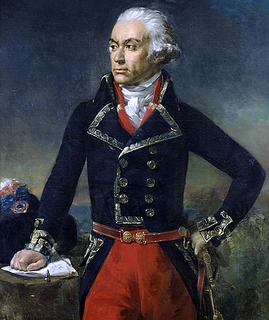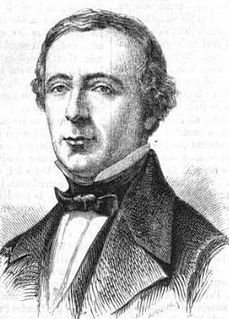
Louis-Hector Berlioz was a French Romantic composer. His output includes orchestral works such as the Symphonie fantastique and Harold in Italy, choral pieces including the Requiem and L'enfance du Christ, his three operas Benvenuto Cellini, Les Troyens and Béatrice et Bénédict, and works of hybrid genres such as the "dramatic symphony" Roméo et Juliette and the "dramatic legend" La damnation de Faust.

Ivory Coast or Côte d'Ivoire, officially the Republic of Côte d'Ivoire, is a country located on the south coast of West Africa. Ivory Coast's political capital is Yamoussoukro in the centre of the country, while its economic capital and largest city is the port city of Abidjan. It borders Guinea and Liberia to the west, Burkina Faso and Mali to the north, Ghana to the east, and the Gulf of Guinea to the south.

Marie Jean Pierre Flourens, father of Gustave Flourens, was a French physiologist, the founder of experimental brain science and a pioneer in anesthesia. Through the study of ablations on animals, he was the first to prove that the mind was located in the brain, not the heart.

Charles-François du Périer Dumouriez was a French general during the French Revolutionary Wars. He shared the victory at Valmy with General François Christophe Kellermann, but later deserted the Revolutionary Army, and became a royalist intriguer during the reign of Napoleon as well as an adviser to the British government. Dumouriez is one of the names inscribed under the Arc de Triomphe, on Column 3.

Pierre Gaultier de Varennes, sieur de La Vérendrye was a French Canadian military officer, fur trader and explorer. In the 1730s, he and his four sons explored the area west of Lake Superior and established trading posts there. They were part of a process that added Western Canada to the original New France territory that was centered along the Saint Lawrence basin.

Étienne Nicolas Méhul was a French composer, "the most important opera composer in France during the Revolution". He was also the first composer to be called a "Romantic".

Pierre Belon (1517–1564) was a French traveler, naturalist, writer and diplomat. Like many others of the Renaissance period, he studied and wrote on a range of topics including ichthyology, ornithology, botany, comparative anatomy, architecture and Egyptology. He is sometimes known as Pierre Belon du Mans, or, in the Latin in which his works appeared, as Petrus Bellonius Cenomanus. Ivan Pavlov called him the "prophet of comparative anatomy".

The Conservatoire de Paris is a college of music and dance founded in 1795. Currently known as the Conservatoire national supérieur de musique et de danse de Paris (CNSMDP), it is situated in the avenue Jean Jaurès in the 19th arrondissement of Paris, France. The Conservatoire offers instruction in music and dance, drawing on the traditions of the "French School". Formerly the consrvatory also included drama, but in 1946 that division was moved into a separate school, the Conservatoire national supérieur d'art dramatique (CNSAD), for acting, theatre and drama. Today the conservatories operate under the auspices of the Ministry of Culture and Communication and are associated with PSL Research University. The CNSMDP is also associated with the Conservatoire national supérieur de musique et de danse de Lyon (CNSMDL).

Pierre Marie François de Sales Baillot was a French violinist and composer born in Passy. He studied the violin under Giovanni Battista Viotti and taught at the Conservatoire de Paris together with Pierre Rode and Rodolphe Kreutzer, who wrote the conservatoire's official violin method. He was sole author of the instructional L'art du violon (1834). Baillot's teachings had a profound influence on technical and musical development in an age in which virtuosity was openly encouraged. He was leader of the Paris Opéra, gave solo recitals and was a notable performer of chamber music. He died in Paris in 1842.

Pierre François Xavier de Charlevoix, S.J. was a French Jesuit priest, traveller, and historian, often considered the first historian of New France. He had little interest for "a life of suffering and deprivation for the conversion of Indian souls", but "an eager curiosity concerning life".

Pierre-Justin-Marie Macquart was a French entomologist specialising in the study of Diptera. He worked on world species as well as European and described many new species.

Angelo Rinaldi is a French writer and literary critic.

Ambroise Marie François Joseph Palisot, Baron de Beauvois was a French naturalist.
La mort d'Adam is an opera in 3 acts by Jean-François Le Sueur with a French libretto by Nicolas-François Guillard after Klopstock, first performed in 1809, though written a few years earlier.

Jean Baptiste Louis Pierre, also known as J. B. Louis Pierre, was a French botanist known for his Asian studies.
Louis François, marquis de Monteynard was a French soldier and statesman.
The Corsican mafia is a set of criminal groups which are part of the French Mob, originating from Corsica. The Corsican mafia is an influential organized crime structure, operating in France, Russia, and many African and Latin American countries. The most important groups of the Corsican mafia include the Unione Corse and the Brise de Mer gang.

Pierre-François Wartel, was a French tenor and music educator. His wife was Thérèse Wartel, a talented pianist, and their son Émile was a bass who sang and created several operatic roles between 1857 and 1870 at the Théâtre Lyrique and later founded his own singing school.

François-Xavier Joseph de Casabianca was a French aristocrat, lawyer and politician who served as Minister of Agriculture and Commerce, Minister of Finance and then President of the Council of State in the government of Louis Napoleon.

Joseph Louis d'Ortigue was a French musicologist and critic. A specialist in liturgical music and a conservative Catholic of ultramontane and royalist leanings, he was a close friend of both Berlioz and Liszt. His most influential work was Dictionnaire liturgique, historique, et theorique de plain-chant et le musique d'église, but he was also wrote for many of the most prominent periodicals of the day, including Journal des débats and Le Ménestrel where he was the editor-in-chief from 1863 until his sudden death at the age of 64.


















